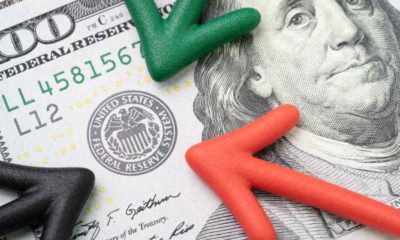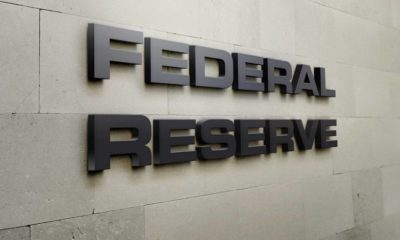Economy
Stanley Druckenmiller Vs The Federal Reserve

Stanley Druckenmiller, hedge funder manager, and former president and chairperson of Duquesne Capital has questioned the Federal Reserve’s monetary policies.
The end of the bull market?
Stanley Druckenmiller has criticized the conduct and policies of the Federal Reserve. He has questioned what the Fed’s overall aim is and went on to accuse them of only being interested in preventing the S&P from a 20% decline.
He went on to say that excessive borrowing from the future, higher valuations, and years of unproductive commercial behavior has signaled the end of the bull market.
Druckenmiller has also accused the Feds of lenient policies which allow politicians to avoid tax reforms.
He also issued a warning about the markets. Without substantially lower prices or change, there is adverse risk or reward. Druckenmiller blamed this on instability in global markets which usually follows a significant shift.
On a more positive note, however, it was strongly hinted by Druckenmiller that it would be a smart move to start investing in gold.
I’m with Stan Druckenmiller — gold has every reason to rise –> https://t.co/Y8rUDy6LxG pic.twitter.com/2tBGCMrJDw
— The Capitalist (@Capitalist_Site) May 9, 2016
How correct is Druckenmiller?
There are many reasons why Druckenmiller and others are predicting that the end is in sight for the bull market –
- China – annual GDP growth has fallen below 7% or possibly lower, this is having a huge knock-on effect which is affecting other markets
- Federal Reserve – rates are being raised by the Fed’s, although these are unlikely to be severe this will cause the dollar's value to increase which then decreases the value of commodities
- U.S fewer earnings – while the US dollar is strong, but other areas are weak this leaves little room for growth, experts are predicting further declines when companies start declaring their next quarter earnings
- Market leadership – the companies who did do well (Microsoft, Amazon, Facebook, Ebay, etc.) mainly did so because investors threw money at the few companies who showed potential, there was major dirt for choice
- Seasonal indicators – January figures were wrong, this is a positive time for businesses, overall the market have remained flat and show little recovery
Is it time for the bear to shine?
The markets could realistically still go either way. The bull market usually does not last as long as it currently has. S&P Capital IQ have released a report which recommends investors proceed with caution.
We are in a situation where historically there is not a lot of experience. Overall there have only been three economic meltdowns and recoveries, this one and two previous. The majority of improvements have followed very placid downturns.
The history of the bear vs. bull
The bear vs. bull market can be traced back as far as 1929. If you look back at previous bear and bull markets, it would seem that a return to the bear market is inevitable.
There have been 25 bear markets since 1929, and all these have lasted on average nine months. The average loss seen during bear markets is -35%, the smallest being -29% in 949 and the largest being -62% in 1932).
In 2009 the last bear market ended, the average frequency of bear market is every 3.4 years. As you can see, we are long overdue.
In contrast, there have been 25 bull markets since 1929, and these have all lasted on average 31 months. The average gain seen during these bear markets are +104%, the smallest being +21% in 2001 and the largest being +582% between 1987 and 2000).
We are currently in a bull market which has been ongoing for roughly seven years.
When will the bear emerge?
There has been plenty speculation surrounding this question; however it is a commonly held belief that we will enter a bear market by the end of 2016.
The current situation is not sustainable for much longer; our current stock opportunities are primarily on the short side. The short side can lead to devastating results as there is a huge risk attributed to shorting individual stocks.
The Federal Reserve has been trying to resist deflation by artificially creating inflation. However, these policies by the Federal Reserve are beginning to unravel. This resistance is why after the financial crash commodities soared, but recently products have started to come back down.
The actions of the Federal Reserve have led to the public believing we have been heading for a recovery. This recovery, however, has been artificial and has only been delaying the inevitable.
The false recovery has only made the situation harder to recover from in the future. Market failure, although painful, it is necessary. The only way to recover is to stop adding to the already excessive debt and allow the economy to reset naturally.
Despite news of a bear market an economic catastrophe, it may, in fact, prove to be the complete opposite. History demonstrates that the battle of the bear and the bull, in fact, bring balance to the markets, the bull brings the boom, and the bear brings recovery.















